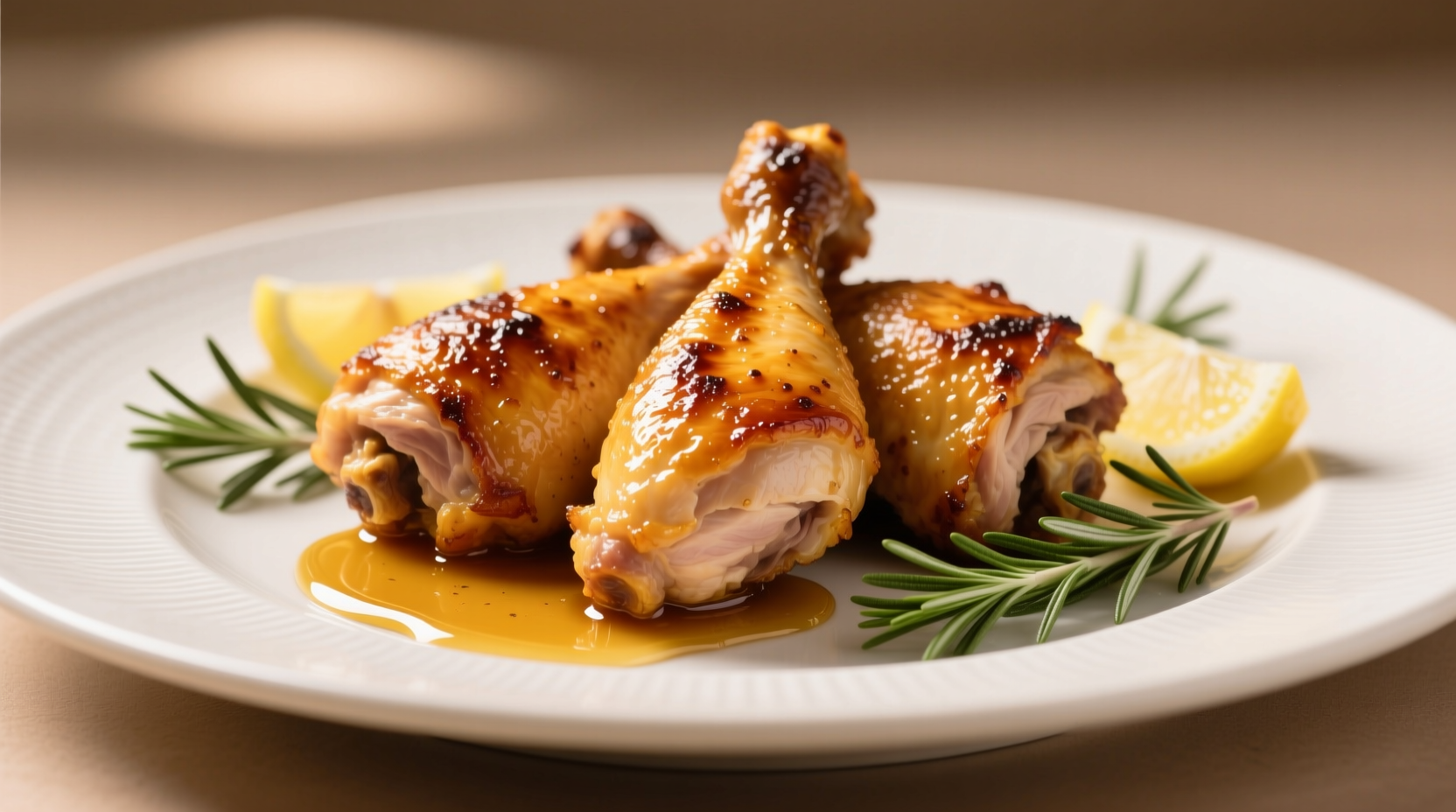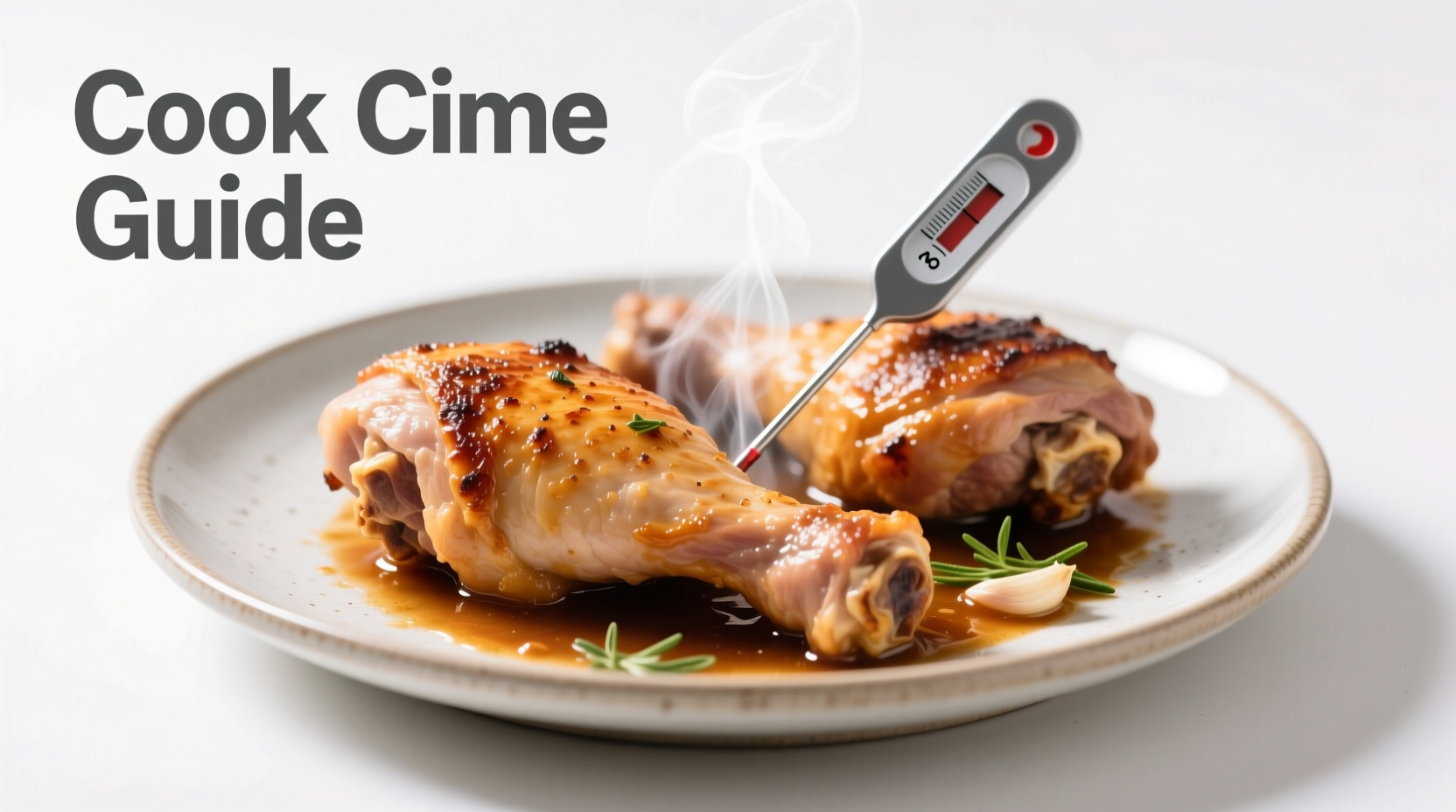Direct Answer: Bone-in chicken thighs take 35-45 minutes at 400°F (205°C), while boneless thighs need 25-35 minutes. Always verify with a meat thermometer—chicken must reach 165°F (74°C) internally for safe consumption. Cooking times vary based on method, oven accuracy, and starting temperature.
Perfectly Cooked Chicken Thighs Every Time: Your Complete Timing Guide
Nothing ruins dinner plans faster than undercooked or dried-out chicken thighs. As a home cook, you need precise timing guidance that accounts for real-world variables—not just textbook recommendations. This guide delivers exactly that, with tested cooking times for every method and clear indicators that guarantee juicy, safe results.
Why Chicken Thigh Cooking Times Aren't One-Size-Fits-All
Chicken thighs contain more fat and connective tissue than breasts, making them more forgiving but requiring different timing approaches. The USDA Food Safety and Inspection Service confirms that poultry must reach 165°F (74°C) internal temperature to eliminate harmful bacteria like salmonella. However, cooking time alone isn't reliable—multiple factors affect how quickly thighs reach this critical temperature.
| Cooking Method | Bone-In Time | Boneless Time | Recommended Temp |
|---|---|---|---|
| Oven Roasting | 35-45 min | 25-35 min | 400°F (205°C) |
| Stovetop Pan | 25-30 min | 18-25 min | Medium-high heat |
| Grilling | 30-40 min | 20-30 min | 375-450°F (190-230°C) |
| Slow Cooker | 3-4 hours | 2.5-3.5 hours | Low setting |
Your Step-by-Step Cooking Process
Preparation: Setting Yourself Up for Success
Take chicken thighs out of the refrigerator 20-30 minutes before cooking. The FDA Food Code emphasizes that proper temperature management prevents bacterial growth. Starting at room temperature ensures even cooking—cold meat straight from the fridge requires longer cooking that dries out the exterior before the interior reaches safe temperature.
Pat thighs dry with paper towels. Moisture on the surface creates steam instead of allowing proper browning. Season generously, focusing on the skin side for maximum flavor impact.
Cooking by Method: Timing Adjustments You Need to Know
Oven Roasting for Hands-Off Perfection
Preheat your oven to 400°F (205°C). Place thighs skin-side up on a baking sheet. For crispier skin, elevate them on a wire rack. Roast bone-in thighs for 35-45 minutes, boneless for 25-35 minutes. The American Institute for Cancer Research notes that higher oven temperatures create better browning with less cooking time, preserving moisture.
Critical check: Insert a thermometer into the thickest part, avoiding bone. At 155°F (68°C), remove from oven—carryover cooking will raise temperature to 165°F (74°C) during resting.
Stovetop Mastery: Achieving Restaurant-Quality Results
Heat 1 tablespoon oil in a heavy skillet over medium-high heat. Place thighs skin-side down. Bone-in thighs need 25-30 minutes total (15-20 minutes skin-side down, 10 minutes flipped), boneless require 18-25 minutes. Lower heat if skin browns too quickly before interior cooks.
Pro technique: Press thighs gently with a spatula for 10-second intervals during first few minutes to ensure full contact with the pan, creating even browning without sticking.

Determining Doneness Without a Thermometer
While a thermometer is essential for food safety, these visual indicators confirm proper cooking:
- Juices run clear when pierced (no pink or red tint)
- Meat separates easily from bone with slight pressure
- Internal texture is firm but yields to gentle pressure
- Shrinks slightly from bone in properly cooked bone-in thighs
Warning: Color alone isn't reliable—chicken can appear white but still be undercooked, or retain pinkness despite reaching safe temperature (due to myoglobin reaction).
Troubleshooting Common Cooking Problems
Undercooked Chicken: The Safe Correction Method
If your thermometer reads below 165°F (74°C), return to heat immediately. For oven-cooked thighs, increase temperature by 25°F and check every 5 minutes. For stovetop, cover the pan to trap heat and cook 5-8 minutes longer. Never wash raw chicken—this spreads bacteria according to USDA guidelines.
Dry Chicken: How to Salvage and Prevent
Dryness usually comes from overcooking by just 5-10 minutes. To rescue:
- Slice thinly and toss with warm broth or sauce
- Shred for tacos or salads where moisture comes from other components
- Next time, remove at 155°F (68°C) and rest 10 minutes covered with foil
Advanced Timing Considerations
Cooking times have evolved with modern understanding of food science. The National Chicken Council explains that previous recommendations were more conservative, but current guidelines balance safety with quality. Bone-in thighs actually cook more evenly than boneless despite longer times—the bone conducts heat gradually through the meat.
Special circumstances affecting timing:
- Frozen thighs: Add 50% more time, but thawing is recommended for even cooking
- Convection ovens: Reduce time by 10-15% or lower temperature by 25°F
- High altitude: Increase time by 5-10% above 3,000 feet elevation
- Thick thighs: May require 5-10 minutes additional cooking regardless of method
Resting: The Critical Final Step
Rest thighs for 5-10 minutes after cooking. This allows juices to redistribute—skipping this step causes moisture loss when cutting. Tent loosely with foil to maintain temperature without steaming the skin. During this time, internal temperature typically rises 5-10°F from carryover cooking.
Storing and Reheating Leftovers Safely
Cool cooked chicken within 2 hours (1 hour if room temperature exceeds 90°F). Store in airtight containers for up to 4 days. Reheat to 165°F (74°C) internal temperature—this typically takes 8-12 minutes in a 350°F oven or 3-5 minutes per side in a skillet with a splash of liquid to prevent drying.
FAQ: Your Chicken Thigh Timing Questions Answered
Can chicken thighs be slightly pink and still be safe to eat?
Yes, properly cooked chicken thighs can retain a pinkish tint near the bone due to myoglobin reaction, not undercooking. Always verify with a thermometer—the meat must reach 165°F (74°C) internally regardless of color. The USDA confirms that color isn't a reliable doneness indicator.
How do I adjust cooking time for smoked chicken thighs?
Smoking requires lower temperatures and longer times—typically 2.5-3.5 hours at 225-250°F (107-121°C). Bone-in thighs need about 3 hours, boneless about 2.5 hours. Always check internal temperature rather than relying solely on time, as smoker temperatures can fluctuate.
Why does my oven take longer than recommended cooking times?
Oven temperature accuracy varies significantly—many home ovens are 25-50°F off their setting. Use an independent oven thermometer to verify actual temperature. Convection settings, frequent door opening, and starting with cold pans all extend cooking time. Always prioritize internal meat temperature over clock time.
Can I cook chicken thighs at a lower temperature for longer?
Yes, but stay above 140°F (60°C) to avoid the food safety danger zone. At 325°F (163°C), bone-in thighs need 50-60 minutes. Lower temperatures risk drying out the exterior before the interior cooks. For best results, start high (425°F) for browning, then reduce to 350°F to finish cooking.











 浙公网安备
33010002000092号
浙公网安备
33010002000092号 浙B2-20120091-4
浙B2-20120091-4